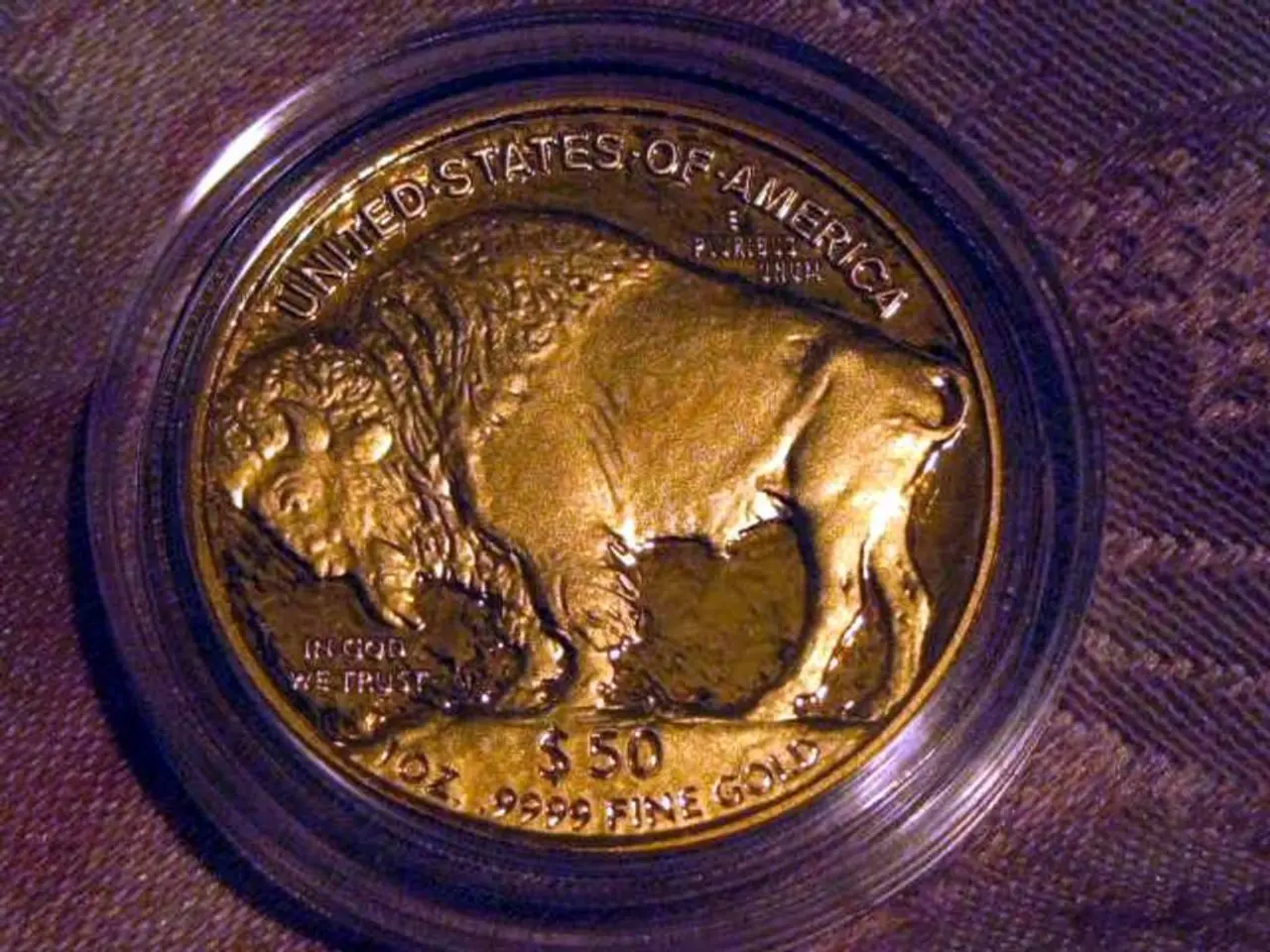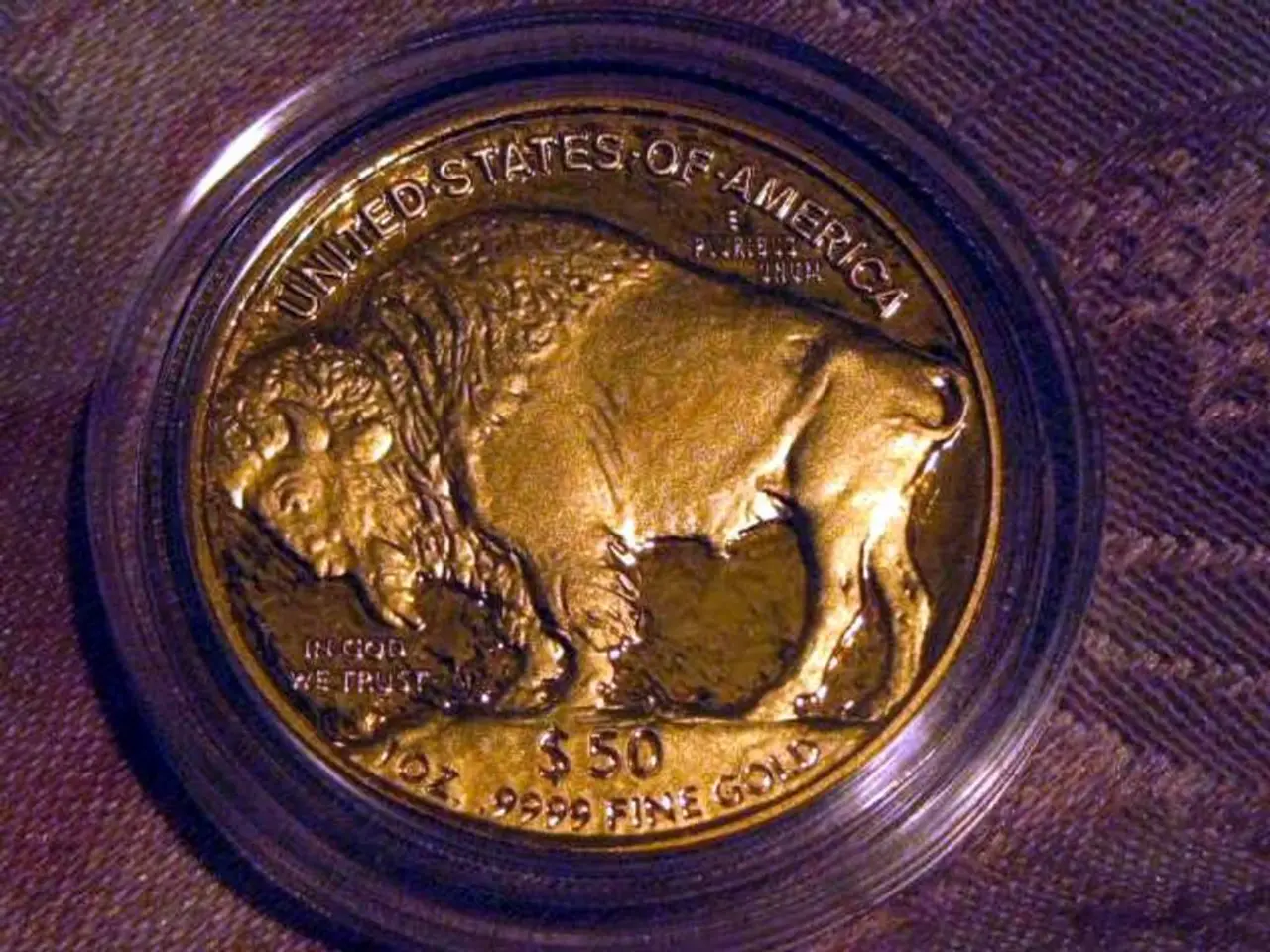Trump and Powell Offer Diverging Views on Interest Rate Adjustments
In the current economic landscape, the U.S. government debt stands at a staggering $36 trillion, with the overall interest rate on this debt being significantly influenced by market forces rather than the Federal Funds rate set by the Federal Open Market Committee (FOMC) [1].
The FOMC, with its dual mandate to promote maximum employment and maintain inflation at around 2% over the long run [3], wields various tools to achieve these goals. One such tool is setting the federal funds rate, which impacts short-term borrowing costs for banks, potentially affecting longer-term interest rates, including those on U.S. government debt [1].
However, it's important to note that the FOMC's control over the federal funds rate is not absolute. Market forces and transmission effects play a significant role, making the FOMC's influence on the overall term structure of interest rates limited [2].
The FOMC sets the federal funds rate eight times a year, and as of June 2025, it remains steady at 4.25% to 4.5% [1][2]. Meanwhile, the rate on the U.S. government 10-year bond has fluctuated from 4.1% to 4.7% [1].
While the Fed does not directly control the overall interest expense on the national debt, it can indirectly influence it through monetary policy decisions. For instance, by lowering the federal funds rate, the Fed can reduce borrowing costs for banks, potentially leading to lower interest rates on U.S. government debt [1].
Another tool the Fed uses is Quantitative Easing (QE), which involves buying government securities, including Treasury bonds, during times of economic stress [1]. This action can help reduce longer-term interest rates by increasing demand for these securities, potentially lowering the cost of borrowing for the U.S. government and the interest expense on the national debt [1].
However, achieving low interest rates is not part of the FOMC's mandate as defined under Section 2A of the Federal Reserve Act [4]. The FOMC's primary focus remains on maintaining its dual mandate of maximum employment and price stability.
As of July 2025, U.S. government debt was about 20% in the form of bills with a maturity of 4 to 52 weeks [5]. The cost of servicing this debt is now similar to the entire U.S. Medicare or defense budget [6].
Looking ahead, the FOMC may be on track to cut rates later in 2025 [7]. President Trump will nominate a new Fed Chair for 2026 [8]. Regardless of who takes the helm, the Federal Reserve's role in influencing U.S. government debt and interest rates will remain crucial in navigating the nation's economic landscape.
References: 1. Federal Reserve, "Federal Funds Rate," accessed July 2025, https://www.federalreserve.gov/monetarypolicy/openmarket.htm 2. Federal Reserve Bank of St. Louis, "Federal Funds Rate," accessed July 2025, https://fred.stlouisfed.org/series/FEDFUNDS 3. Federal Reserve, "Dual Mandate," accessed July 2025, https://www.federalreserve.gov/monetarypolicy/dual-mandate.htm 4. Federal Reserve Act, Section 2A, accessed July 2025, https://www.federalreserve.gov/legislation/federalreserveact.htm 5. U.S. Treasury, "Treasury's Daily Statement of the Public Debt," accessed July 2025, https://www.treasurydirect.gov/NP/BPD/pd/ 6. Committee for a Responsible Federal Budget, "The Cost of Debt Service," accessed July 2025, https://crfb.org/theissues/cost-debt-service 7. Wall Street Journal, "FOMC May Cut Rates Later in 2025," accessed July 2025, https://www.wsj.com/articles/fomc-may-cut-rates-later-in-2025-11625638301 8. White House, "President Trump to Nominate New Fed Chair for 2026," accessed July 2025, https://www.whitehouse.gov/briefings-statements/president-trump-nominate-new-fed-chair-2026/
In the forthcoming year of 2025, President Trump will nominate a new Fed Chair for 2026, who may potentially influence U.S. government debt and interest rates through monetary policy decisions, such as lowering the federal funds rate to reduce borrowing costs for banks that could lead to lower interest rates on U.S. government debt. Regardless of the new Fed Chair, the Federal Reserve's role in shaping the interest rate outlook for 2025 and beyond in connection with business, finance, and investing will remain indispensable.




